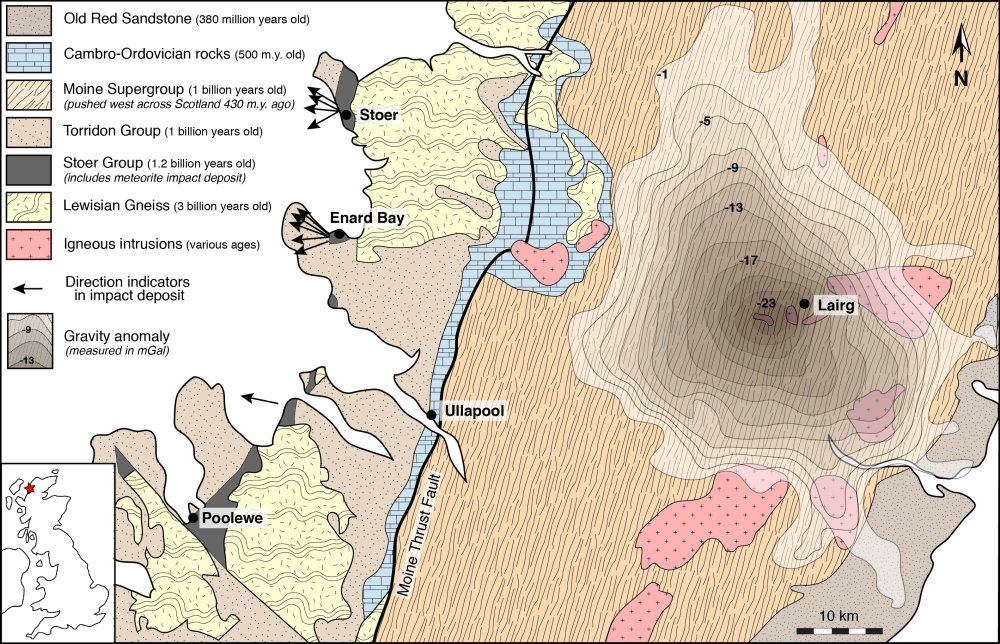This one is geology rather than catastrophism as a geologist is at the heart of the discovery. Channel 4 Had a TV programme about it last week which you can see if you missed it at www.channel4.com/programmes/walking-through-time … (and see also https://toriherridge.com/2016/09/23/walking-through-time-scotlands-lost-…
Gary Gilligan is more interested in the Torridon sandstane(which subsequently filled the projected crater) as sand is a subject close to his heart (and wherever sand pops up we have to wonder about its origin). For example, sandstones occur on top of chalk geology in southern England (sometimes known as sarsen) and these too were laid down during an upheaval of some kind (during or at the end of the Palaeogene). In the Torridons we have sandstone laid down during or shortly after an asteroid strike. Thank you for the link Gary.
The projected crater site was already classified as an unconformity – it did not fit the usual pattern. There was a gravity anomaly. This meant a closer look and now it is thought a crater exists beneath sedimentary layers such as sandstone, arkose and shale. For an insight into what these might be, see https://en.wikipedia.org/wiki/Torridonian … https://en.wikipedia.org/wiki/Arkose … and https://en.wikipedia.org/wiki/Shale
Shales are composed of mud and clay particles, Arkose is a sandstone containing 25 per cent feldspar (Arkosian sand is sand rich in feldspar) and the Torridonian formation (from the Torridon Mountains) is a name for a group of sedimentary rocks in NW Scotland, such as red and brown sandstone, shales and arkoses.

The strike site is also associated with shocked quartz and by sandstone flecked with tiny fragments of green glass. The glass represents melted rock – and the heat generated was hot enough to force the glass, or melted rock, to seep into sand grains and become rock in itself, folding them in a dramatic fashion. The shale, in turn, is thought to derive from a volcanic like mud flow – induced by the strike creating a tectonic backlash or simply by the violence of the strike itself creating the mud flow. The inference is that an object hit the ground where sand and mud was a common ingredient (quite unlike the modern landscape of the region). Of course, one could conjecture the sand came out of the bowels of the earth as a result of the strike (along with the mud flow) or arrived with the asteroid (or comet). It is interesting to see how mainstream takes onboard such catastrophic events but continues to interpret some of the geology in purely uniformitarian terms.
